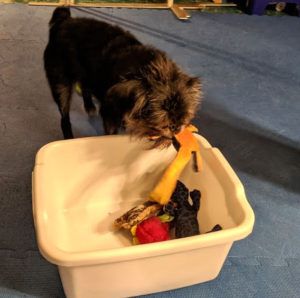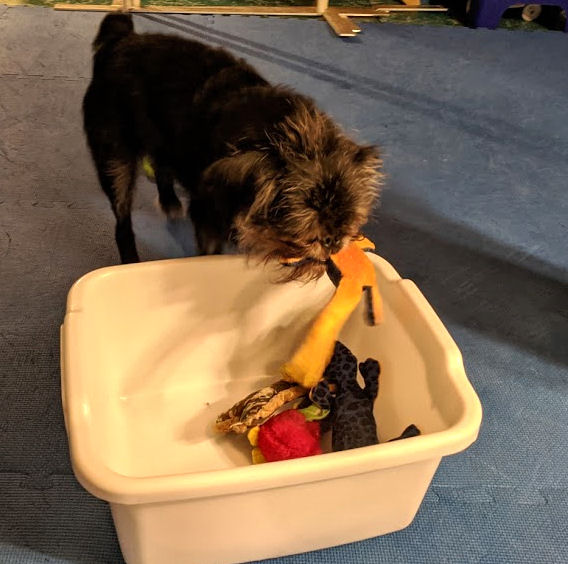This week in her Beginner Obedience class, Hope’s face had an unfortunate encounter with the nails of a seven-month old Labrador Retriever. She’ll be fine. So will her face. But it made us think about the timing of dog training. If this dog’s owner had started training when he was three months old, by now he would know how to greet politely. And if he had jumped on Hope (she’s only five feet tall), he wouldn’t have been able to reach her face. Or do as much damage.
When is the right time to start training your puppy or dog? The simple answer is “as soon as you come in the door.” Dogs are learning all the time. It’s up to you to make that learning purposeful. And fun. Something the two of you can do throughout the dog’s life to enrich your time together.
It’s not a chore
If you hated school, don’t let whatever negative baggage you have color your opinion of dog training. Dogs are for fun. Teaching them is fun. The way they learn best is by playing games. So, essentially, school for dogs is just playing games. You may be the dungeon master, but both of you should have fun playing the game.
First, decide what’s most important for your dog to know. If you’re a hermit who never goes out and never has company, you probably don’t care if your dog jumps on people to say hi. For the rest of us, it should be right at the top of the curriculum.
It’s easy, too. All you have to do is have everybody ignore the puppy (or dog) unless all four feet are on the floor. You don’t have to insist on a “Sit!” If you want it, it comes later. All you have to do is nothing. When the dog’s front feet are off the ground, just have people fold their arms and stare into the sky. As soon as those adorable little paws are all in contact with the ground, make a huge fuss over the puppy – pets, scritches, treats. Even a game of tug if there’s a toy nearby. It’s easy to see that the timing of dog training is not a big deal when it’s fun for everyone.
When a dog jumps on someone, they’re saying “Hi! I’m here! Pay attention to me!” If the dog doesn’t get what they want, they’ll try something else. When that something else gets them what they want, they’re more likely to do that again. What gets rewarded, gets repeated. It may take a few repetitions to work. And we know it’s hard to resist those puppy dog eyes. Do it anyway. That way when your dog is as tall as you, you won’t have to worry about them scratching up your guests’ faces. Or having to hang on to their collar for dear life so they don’t jump.
Class time
You already know that habit is the most powerful force in the universe. Gravity may be a close second, but that’s debatable. It’s easier to form a new habit with a dog than to try to break an established one.
The point is; if you have a new-to-you dog, whether a puppy or an adult, start as you mean to continue. It may be adorable for a 15-pound puppy to jump on you, paw at you, or whine for attention. When the dog weighs 60 pounds, it’s not so cute. When Grandma comes over to visit, or your toddler nephew, there’s nothing cute about it.
You should form a new habit, too. Pick a time for your training. Make a date with your dog every day right after you’ve had your coffee. You can use your dog’s breakfast for training treats. You get to smile at the start of the day. And your dog will be satisfied (food) and tired (had to think!) for the morning.
Other end of the timeline
That habit will stand you in good stead for your dog’s entire lifetime. When your dog’s caught up on the house rules (house-breaking, jumping, crate training), you can spend every day playing the training games that are more fun; Ring Stacking, Put Your Toys Away, anything you come up with that makes you both happy.

It never has to go away. Tango, Fran’s Brussels Griffon, will celebrate his 15th birthday this month. He decided to retire from the competition ring in Rally and Agility long ago – he wasn’t having fun. But every single day he still plays training games. He plays his Balance and Core Exercises. And he plays “Put Your Toys Away.” The timing of dog training for Tango is “all the time!”
Playing training games with your dog really isn’t about the training. It’s about the growth of your relationship with your dog, the understanding it builds between you, and giving your dog the biggest life you both can share.

